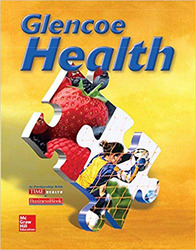
Glencoe HealthChapter 22: Illegal DrugsStudent Web Activities Lesson 3: Psychoactive Drugs |  |
 | ||||||||||||||||||||||||||||||||||||||
| ||||||||||||||||||||||||||||||||||||||



Unit Resources
Chapter Activities



Teacher
Student
Unit Resources
Teacher
Student
Chapter Activities
Teacher
Student

  | |||||||||||||||||||||||||||||||||||||||||||||||||
Please read our Terms of Use and Privacy Notice before you explore our Web site. To report a technical problem with this Web site, please contact the Web Producer. | |||||||||||||||||||||||||||||||||||||||||||||||||


